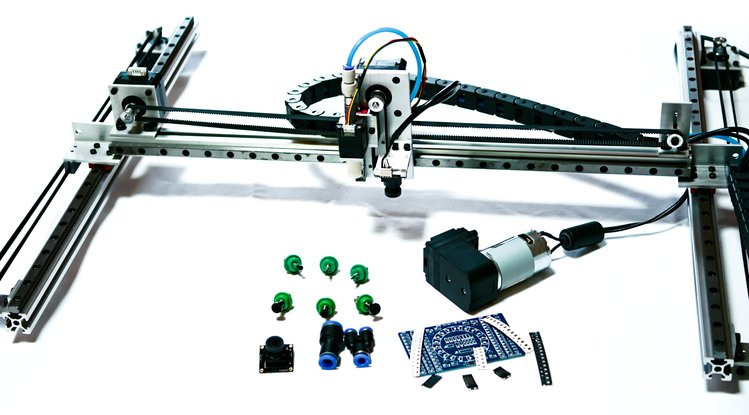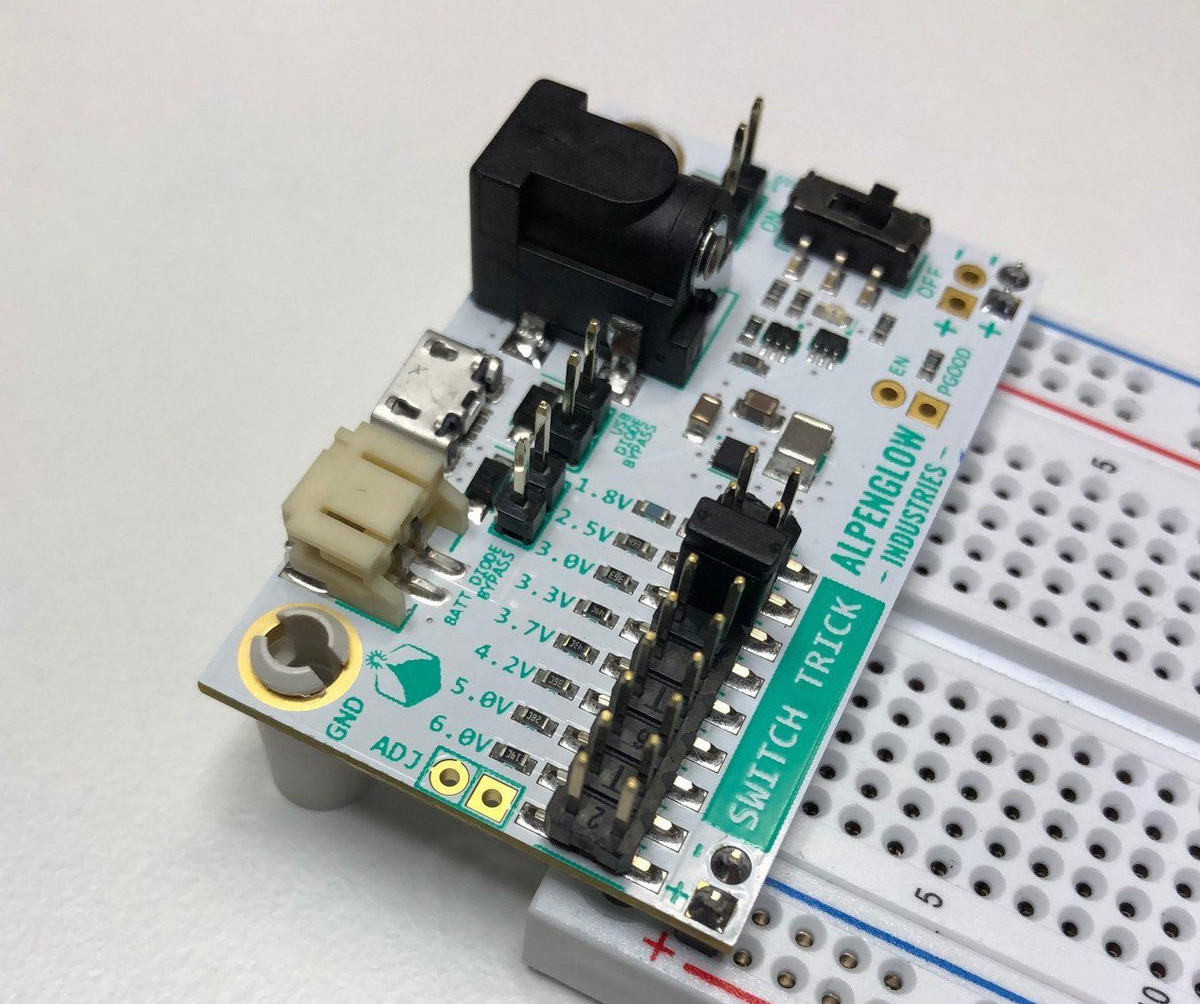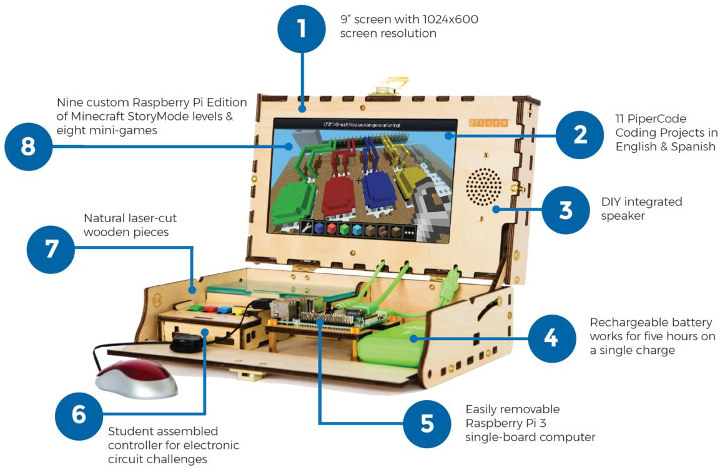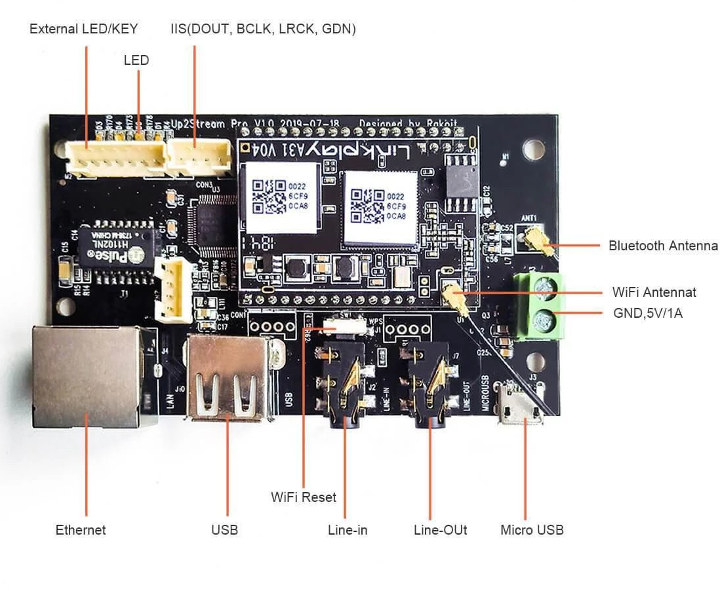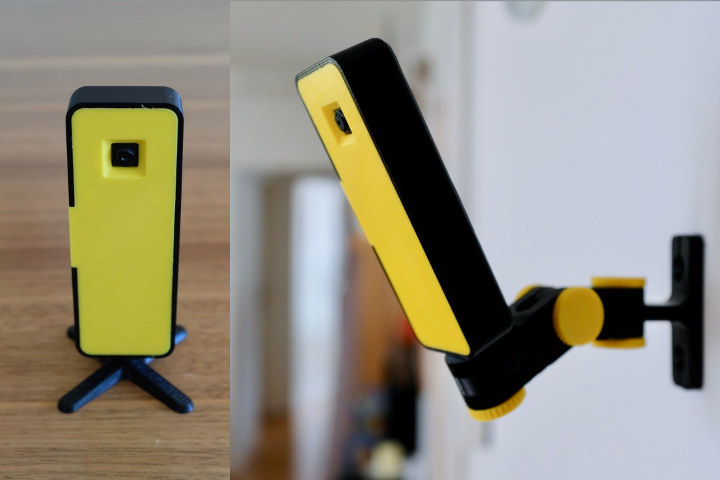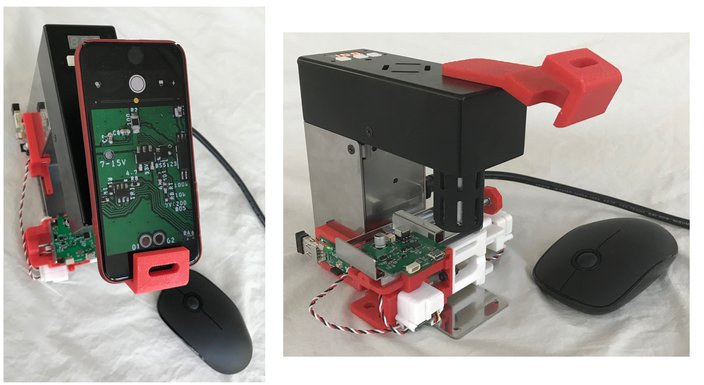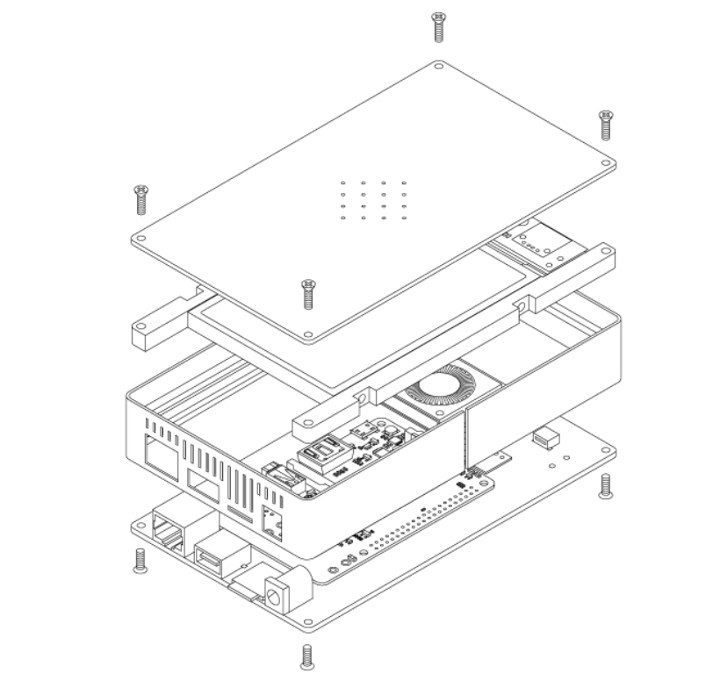If you have a small production run for your board, it may not be cost-effective to ask a factory to manufacture it for you, and assembling the boards entirely by hand will be a time-consuming process. Getting a pick-and-place machine to automate the process would save time, but even the cheaper models on Aliexpress cost several thousand dollars. Citrus CNC tries to address the cost issue with the SimplePnP open source hardware pick-and-place machine that brings the price down to several hundred dollars. SimplePnP key features and specifications: MCU – Microchip Atmega328p running GRBL firmware Motor Drivers – TMC2209 stepper for two-phase stepper motors Word Area – 300 mm (X) x 300 mm (Y) Z Travel – 23 mm Components per Hour – 750 with vision assist Component Size – As small as 0402 (1005 metric) Vacuum Heads – Single vacuum head (base model), or optional dual-head Nozzle System – […]
SwitchTrick Switching Power Supply Board Helps you Test your Breadboard Circuit
We’ve covered several power supplies for breadboards over the years including toaster breadboard power supply with variable voltage output, or the portable, battery-powered MEGO power supply that allows you to power your project on the go. The SwitchTrick is another one of those breadboard power supplies but with testing in mind, as it takes input from various sources, and with jumper selection for voltage from 1.8V to 6V allows you to easily simulate different battery voltage levels, or the test the overvoltage protection of your circuit for example. SwitchTrick key features and specifications: Step-down converter – TI TPS62160 3-17V step down-convertor adjustable from 0.9-6V out at 1A. Power Input – 3V to 17V via 5.5×2.1mm power jack for 9V battery or wall supply Micro USB connector for 5V 2-pin JSY PH connector for battery 2x large plates holes for alligator clips Power Output (selectable by a jumper) 1.8V 2.5V 3.0V […]
Piper Computer Kit 2 is a DIY Raspberry Pi 3 Computer for Kids’ Education
Kids can easily build theirs own computer and then learn more about electronics and programming thanks to Piper Computer Kit 2. The kit is based on Raspberry Pi 3 SBC, a 9″ display, a power bank, and all bits and pieces required for assembly. There’s also a 16GB microSD with the OS and the company’s PiperCode software to learn the basics of programming. The complete kit comes with the following items: SBC – Raspberry Pi 3 Model B Storage – 16GB MicroSD card Display – 9″ 1024 x 600 LCD display with HDMI cable Audio – Integrated speaker 25+ laser-etched wooden and acrylic pieces 50+ hardware pieces 20+ electronic components Battery – 7,800 mAh rechargeable battery/power bank Phillips-head screwdriver 8 square foot laminated blueprint USB Mouse This is whay it looks like after around two hours of assembly time. Kids can then start playing Raspberry Pi Edition Mineccraft and some […]
Up2Stream Pro HiFi Audio Receiver Board Streams Audio over WiFi, Bluetooth, Ethernet, or USB
Last December, we wrote about Up2Stream WiFi audio module designed for people wanting to build their own DIY wireless speakers. The module is based on MediaTek MT7688AN MIPS processor with 64MB DDR2 and 16MB flash storage The module also comes with a small baseboard allowing for an easier connection to speakers. The company has now introduced Up2Stream Pro model based on the same module, but with a baseboard adding more features including Bluetooth, Ethernet, USB, and audio jacks. Up2Stream Pro key features and specifications: Audio Output – 3.5mm AUX jack and I2S header Input – 3.5mm AUX-in SNR: 91db THD: 0.03% Sample rate – 24bit up to 192kHz FLAC, Wav, and APE codec supported, but NOT SBC, APT-X, APT-X HD, or LDAC. Multiroom & Multizone support EQ control Connectivity – Ethernet, WiFi, and Bluetooth 5.0 Streaming Protocols – Airplay, DLNA, UPnP, Spotify Connect Compatible Services – Spotify, Deezer, Tidal, Qobuz, […]
Review of SainSmart Genmitsu CNC Router 3018-MX3
Hey Karl here. Back in September of 2018 I reviewed the Sainsmart Genmitsu 3018 Pro. Sainsmart has now further upgraded the 3018 and asked for a review of it. Let’s take a look at the changes and the evolution of the 3018 and see if the increase in price is worth it. You can find the original 3018 on sale for about $200. The pro version can be found for about $250, and the CNC Router 3018-MX3 for $350. I won’t go into too much detail like I did in the previous review. I suggest reading the pro version after reading this one. Most of the experiences and solutions apply to this version. Build Building the CNC Router 3018-MX3 was a breeze. The instructions are fantastic. I struggled a little bit to read the small booklet that came with the kit and afterwards I found a PDF on the Sainsmart […]
HKCam is a Raspberry Pi Zero W based DIY HomeKit IP Camera
HKCam is an IP camera based on Raspberry Pi Zero W board and compatible with any HomeKit apps. The developer, Matthias Hochgatterer, did not make the hardware himself, and instead purchased a Raspberry Pi Zero W + camera kit sold for around $30 on Aliexpress. His main work was to design a 3D printed case and write the software running in the camera, as well as his own Home 3 smart home automation app for iOS compatible with HomeKit. The only hardware needed is the Raspberry Pi Zero W with a power supply, the official Raspberry Pi camera module with is flat cable, and a microSD card, so you could also get those locally instead of purchasing them from Aliexpress. The firmware is based on Raspbian, FFmpeg to access the camera stream, as well as hc, a lightweight framework to develop HomeKit accessories in Go. You’ll find the documentation, source […]
REFLO Air is a $200 Open Source Hardware Portable PCB Reflow Machine (Crowdfunding)
While possible, it can be challenging to solder SMD components with a soldering iron or a heat gun, and going with a reflow oven is much easier and normally yields better results. But reflow ovens are usually fairly bulky, and somewhat expensive. MagixBox’ REFLO Air PCB reflow machine is much more compact making it more portable, open source hardware, and affordably priced since the early bird pledge starts at $199 on Crowd Supply. REFLO Air specifications: Control panel with LCD segment display and buttons Heat Control 100-300°C temperature control K-type thermometer Cooling fan Power Supply-110V-220VAC Max Power – 200 Watts Dimensions – 138 x 138 x 51 mm Weight – 900 g The company also offers optional accessories for its PCB reflow machine with a 3D-printed phone holder to use the phone’s camera to magnify the reflow area, a mini vice made of aluminum, and a semi-automated XY table. The […]
NODE Mini Server V2 is a Raspberry Pi Based Storage Server for the Decentralized Web
We’ve previously covered networked hard drive enclosures with Ethernet and/or WiFi running OpenWrt or Ubuntu that allows you to easily and fairly cheaply connect SATA drives to your local network with models such as Blueendless X3. NODE has done something similar with a DIY project featuring a Raspberry Pi 3 Model B+. NODE Mini Server V2 connects the popular SBC to a 2.5″ SATA hard drive over USB and is designed to build out the physical infrastructure for the decentralized web (e.g. IPFS) that would allow users to replace remote servers with nodes that they themselves own and operate. Having said that nothing would prevent you from using this as a simple NAS although performance will not be as optimal as the aforementioned products due to the lack of SATA or USB 3.0 interface, as well as having “Gigabit” Ethernet limited to 300 Mbps. Having said that the design could […]


